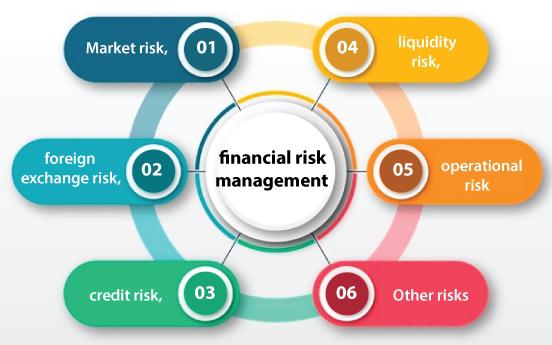In systems with purchaser-provider splits, contract terms for financial risk allocation are negotiated. The objective of this paper is to study the determinants of these contractual arrangements.
We use data from the China Family Panel Studies. We find that healthcare utilisation is influenced by medical insurance and family health financial risk.
1. Financial Management
Financial management is an important component of healthcare to ensure a strong, well-organized foundation and effective operational activity. Finance managers work to reduce risk in all areas of the hospital, from ensuring compliance with ever-changing regulations to making sense of oceans of data and complying with evolving accounting guidelines. They also help to reduce operational risks, such as cash flow volatility and credit risk (delayed payment of invoices), which can impact a company’s ability to pay its bills or invest in new equipment or facilities.
According to a study published in the American Journal of Managed Care, health system administrators must embrace financial risk more as they move away from volume-based reimbursement models and towards value-based care. These models transition financial risk from payers and taxpayers to providers by paying them based on their ability to meet cost and quality benchmarks. Providers in downside-risk arrangements must take on the burden of reducing costs if they fail to meet these goals, resulting in shared losses.
In addition, healthcare facilities must stay on top of federal and state laws regulating the industry, including Medicare, HIPAA, and HITECH. Failure to comply can result in fines and loss of tax-exempt status. Creating a culture of compliance should be a priority to ensure patients’ privacy and the facility’s reputation. Moreover, IT departments must collaborate with financial managers to prevent cybersecurity attacks on electronic medical records and billing systems.
2. Financial Accounting
While physicians focus on saving lives and improving the health of patients, healthcare facilities need to focus on managing their finances. Without proper accounting and record keeping, medical facilities would struggle to meet their financial obligations. Financial or healthcare accounting is a set of practices used to record and report financial transactions for a hospital or clinic. It is also a way to keep track of the overall financial health of the company.
Efficient healthcare accounting means up-to-date records of cash in hand, receivables, payables, and more. This allows the healthcare facility to evaluate its current financial position and make sound business decisions. In addition, accurate accounting reports can help the healthcare facility build credibility with financiers and creditors who may be interested in lending funds to the company.
A recent study found that a growing number of hospitals are embracing shared financial risk arrangements, which can advance value-based care goals. However, the authors note that many providers are hesitant to assume downside financial risks, which can lead to loss of revenue if cost benchmarks are not met.
In order to address these challenges, healthcare facilities must work with qualified accounting professionals who understand the complexities of the industry. These professionals can advise on the best accounting practices and ensure compliance with local regulations. Additionally, they can help to create an efficient payment collection process and monitor controls that eliminate the risk of fraud.
3. Financial Reporting
Financial reporting in healthcare involves sharing information about the financial health of a medical practice with various stakeholders. This includes management, regulators, investors, lenders and media outlets. It can be a challenge to understand what these reports really mean, especially when they appear to contradict one another. This can occur when separate sources of information convey seemingly opposing views about the profitability of a hospital or healthcare organization.
Financial risk refers to the odds of losing money on an investment or business venture. It can affect anyone from individuals to entire economies. It can come from a variety of factors, including failure to pay debts, changes in market interest rates, and the probability that a government will default on its bonds or other debt issues. Individuals can also experience financial risk by investing in assets that lose value over time, such as real estate and securities.
Managing financial risks requires understanding how to interpret and act on complex data. This is why having an interactive system that can quickly provide a detailed picture of the state of your finances is essential to making informed decisions. It is also crucial to identify new revenue opportunities that can help your practice or healthcare organization thrive. These new revenue streams may even allow you to invest in cutting-edge technologies or more staff members.
4. Financial Analysis
Financial analysis involves assessing an organization’s ability to meet its financial obligations and make wise choices regarding financing and investment decisions. It involves calculating a variety of financial ratios and metrics and comparing them to industry standards or benchmarks.
One of the most important aspects of financial analysis is identifying potential risk factors, including their likelihood and severity. Once risks are identified, they can be prioritized to determine which ones are most likely to impact a business or organization. While risk often carries a negative connotation, it is important to remember that it exists in all businesses and sectors, even healthcare.
As the healthcare sector continues to transition to value-based care, providers are expected to assume more financial risk. In addition, a growing number of patients are being insured through bundled payments or other cost-based payment models. This means that providers will need to be able to balance quality with affordability and provide cost-effective treatment.
Additionally, hospitals and other healthcare organizations may need to invest in new equipment or technology to remain competitive. Using financial evaluation techniques, such as net present value and internal rate of return, can help them assess the cost, advantages, and possible hazards of different capital investments. This can help them optimize their finances and improve organizational performance. Additionally, financial analysis can assist with ensuring compliance with regulatory requirements and best practices.
